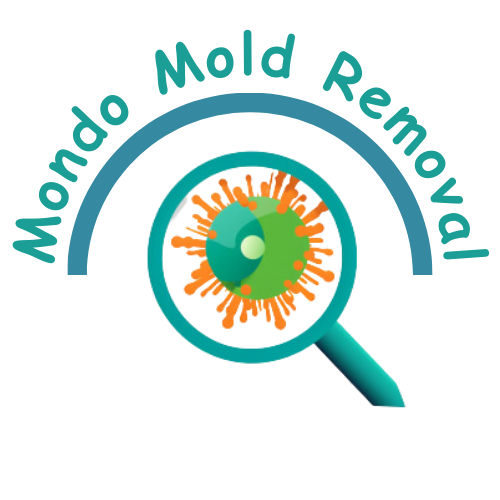In this article, you will learn about the significance of environmental testing for mold and why it is essential for maintaining a safe and healthy living environment. Mold can be found both indoors and outdoors, and its presence can have detrimental effects on our health and the structural integrity of our homes. By understanding the importance of environmental testing, you can take proactive measures to prevent mold growth and ensure the well-being of yourself and your loved ones.
Understanding the Importance of Environmental Testing for Mold

What is Environmental Testing for Mold?
Environmental testing for mold is a process of assessing and analyzing the presence and concentration of mold in various indoor environments, such as homes, offices, schools, and other establishments. This testing involves the collection of air and surface samples to determine the type and quantity of mold present. It helps to identify potential mold growth areas, assess the extent of contamination, and develop effective strategies for mold removal and prevention.
Why is Environmental Testing Important?
Environmental testing for mold is crucial because it enables you to identify the presence of mold before it becomes a widespread problem. Mold growth can occur in damp or moist areas and often goes unnoticed until it causes damage or health issues. By conducting regular environmental testing, you can detect mold in its early stages and take appropriate actions to prevent its growth and spread.
Health Risks Associated with Mold Exposure
Exposure to mold can have detrimental effects on your health. Mold produces spores and mycotoxins that can cause allergic reactions, respiratory problems, and various other health issues. Common symptoms of mold exposure include coughing, wheezing, stuffy or runny nose, itchy or watery eyes, skin rashes, and headaches. Prolonged exposure to mold can also lead to more severe complications in individuals with respiratory conditions or weakened immune systems.
Different Methods of Environmental Testing for Mold
There are several methods of environmental testing for mold, including air sampling, surface sampling, bulk sampling, and swab sampling. Air sampling involves capturing airborne mold spores, which are then analyzed to determine the type and concentration of mold present. Surface sampling collects samples from visible mold growth or suspected areas, while bulk sampling involves collecting materials such as drywall or carpet for laboratory analysis. Swab sampling is commonly used to collect mold samples from hard surfaces such as walls or furniture.

Key Steps in the Environmental Testing Process
The environmental testing process for mold typically involves several key steps. First, a certified mold inspector will conduct a visual inspection of the property, looking for signs of mold growth, water damage, and areas prone to moisture. They will then determine the appropriate sampling method based on the suspected mold presence. Samples are collected and sent to a laboratory for analysis. Once the results are obtained, they are interpreted to assess the severity of the mold problem and develop a remediation plan if necessary.
Interpreting Environmental Testing Results
Interpreting the results from environmental testing for mold requires expertise and knowledge in mold analysis. The laboratory report will provide information about the types and concentrations of mold present in the samples. A qualified mold inspector will assess the results and determine if the mold levels are within acceptable limits or if further action is required. Interpretation of the results is essential in understanding the severity of the mold contamination and guiding the appropriate mold remediation measures.
Benefits of Environmental Testing
Environmental testing for mold offers several benefits. First and foremost, it helps to ensure the safety and well-being of the occupants of a building by identifying and addressing potential mold issues proactively. It provides a comprehensive assessment of mold presence and concentration, enabling you to make informed decisions regarding mold remediation and prevention strategies. Additionally, environmental testing can also be useful in documenting the condition of a property, especially in real estate transactions or insurance claims.
When to Consider Environmental Testing for Mold
There are certain situations where it is particularly important to consider environmental testing for mold. If you notice visible mold growth in your property, experience unexplained health symptoms, or suspect underlying water damage or moisture issues, it is advisable to seek professional mold testing. Furthermore, if you are planning to buy or sell a property, or if there has been a significant water event or flooding, environmental testing can provide valuable insights into the mold situation.
Choosing a Professional Environmental Testing Service
When it comes to environmental testing for mold, it is essential to choose a reputable and experienced professional service. Look for a company that specializes in mold inspection and testing and has certified mold inspectors. Consider their reputation, qualifications, and experience in the field. It is also important to ensure that the service uses accredited laboratories for sample analysis and provides accurate and reliable results. Don’t hesitate to ask for references and compare quotes from different service providers before making a decision.
Preventing and Mitigating Mold Growth
While environmental testing for mold is crucial, it is equally important to take preventive measures to mitigate mold growth. Keep your property well-ventilated to prevent excess moisture buildup. Fix any water leaks or plumbing issues promptly. Use dehumidifiers in areas prone to dampness, such as basements or bathrooms. Regularly inspect and clean areas susceptible to mold growth, such as air conditioning systems, carpets, and bathroom fixtures. Educate yourself and your family about the signs of mold growth and take swift action if any issues arise.
In conclusion, environmental testing for mold is a vital tool in ensuring a safe and healthy indoor environment. By recognizing the importance of mold testing, understanding the associated health risks, and taking appropriate preventive measures, you can effectively protect yourself and your loved ones from the harmful effects of mold exposure. Remember to choose a reputable environmental testing service and follow their recommendations for mold remediation and prevention. With a proactive approach, you can create a mold-free living space and enjoy peace of mind.






